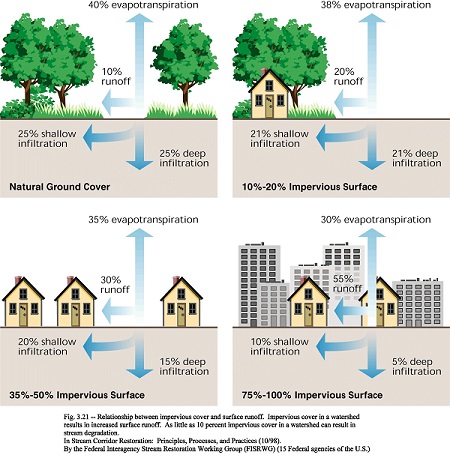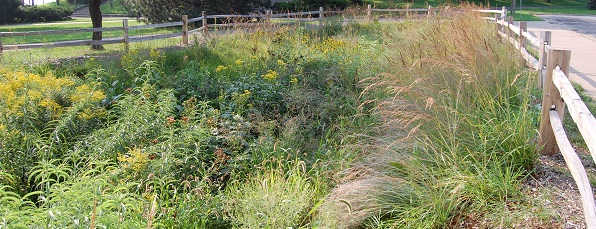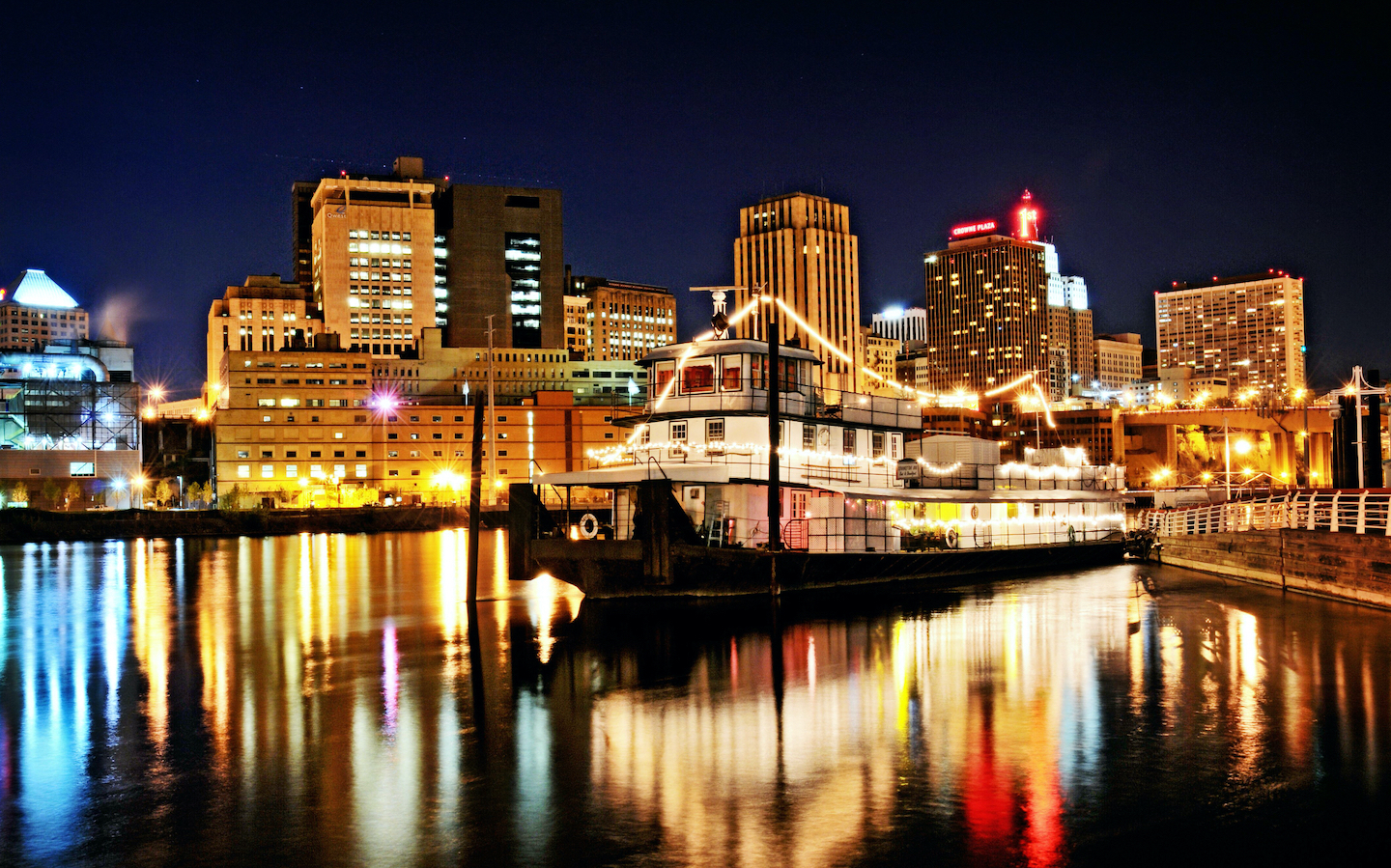Be the Solution to Runoff Pollution.
Does Water That Flows into Storm Drains Get Cleaned?

An average of over 32 inches of precipitation falls in Saint Paul each year. Where does that water go? Some soaks into the ground (infiltration), some is taken up by plant roots and emitted from leaves (evapotranspiration), and some flows over land to a nearby water body (runoff). The stormwater that runs off roads, compacted ground, and parking lots typically goes into storm drains and flows into underground pipes. Storm drains in the Como area carry the water to Como Lake and ultimately the Mississippi River. Since stormwater picks up pollutants like oil, salt, chemicals, and pet waste, people are often surprised to hear stormwater is not treated before it enters the Mississippi!
Before cities grew, most of the rainwater soaked into the ground and was taken up by trees and other plants. Little water flowed over land to lakes and rivers. Today, a large portion of Saint Paul is covered in impervious surfaces like asphalt that don’t allow water to soak into the ground. Areas covered by turfgrass (such as lawns or athletic fields) are sometimes called “green concrete” because roots are shallow and the ground is often compacted. Under these conditions, the amount of stormwater runoff increases.
One of the biggest threats to water quality is leaves and grass clippings, because they deliver excess nutrients to lakes and encourage the overgrowth of algae. Leaves that fall on impervious surfaces get a fast track to the water. Excess nutrients can make lakes and rivers unhealthy for fish and other wildlife and unfit for swimming.
In the Como Woodland Outdoor Classroom, land managers employ strategies to prevent pollution and improve water quality. Much of the stormwater from impervious surfaces adjacent to the Classroom is diverted into the low-lying wet forest plant community where it can infiltrate more naturally. Plantings like native grasses and forbs have long roots that open up pathways for water to infiltrate into the ground.
Gardens That Filter Water and Feed the Birds

Rain gardens are engineered depressions that hold stormwater and allow it to soak into the ground. They are often planted with native species. Pollutants are filtered out through the soil rather than becoming runoff and entering into lakes and rivers. There are numerous rain gardens within Como Park; the nearest one is in front of Como Regional Pool’s main entrance. Rain gardens are increasingly installed in homeowners’ yards and in landscaping of commercial properties to collect stormwater, add aesthetic interest, and provide habitat for wildlife. Look for a rain garden in your neighborhood!
Photos
- Evapotranspiration chart. Federal Interagency Stream Restoration Working Group
- Rain Garden in St. Paul, Minnesota. Photo: City of Saint Paul
